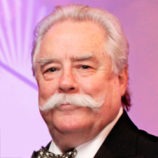He heard himself say, “I’ve been riding more than 45 years and…” was it really that long? It must be. While talking out of one side of his brain he did the math out of the other. Yes, it was that long.
Eavesdropping on himself, his inner self split into another being and walked to the edge of the room. This inner self stood on the periphery of the conversation with the intent of determining whether he was listening to a fool or a genius. Without a name, this technique had been suggested to him in college by a professor of philosophy. Thoreau, or Voltaire or John Locke or Plato or Hegel or Goethe or Immanuel Kant, one of those philosophers had theorized that if you could stand outside of yourself and watch, actually become another person standing apart watching your actions, it would be personally educational and particularly edifying to the spirit. As a result he had tried it, succeeded, and had been doing it for years. Sometimes it was easy, sometimes hard, sometimes impossible. The object was to see yourself as the rest of the world sees you, be aware of everything around you, see and use everything to your advantage, adjust yourself, become a much better poker player with life. Coming out of your mouth might be nonsense or original philosophical ideas that could win the Nobel Peace Prize; one was as unimportant as the other. In any case the split was always instructive and made one a better debater and a more concise story teller.
Quietly he listened and watched while he told a story about an old motorcycle and a young blonde woman. It was everyone’s favorite, a classic story he had told many times, which also happened to be true.
Standing away from himself against the wall, he watched himself talk to the dynamometer technician who was about to put his 1986 Harley FXR motorcycle up on the rollers and give it a test. He watched himself blather on about the old motorcycle and the young blonde woman. At the end of the tale the self, who had been talking, realized that the split had occurred, looked over to the other self and excused himself as the tech closed the door to the dyno room.
That was the way of this technique. After a while the self doing all the talking notices that there is another self observing. They will nod to each other, bringing themselves back together to discuss what each of them has perceived to be the truth of the situation. When the re-connection happens both selfs run the tapes back and watch. Was it OK? Had he gotten too weird? Could he feel comfortable? Had he made a fool of himself? One way or the other the whole thing could be an exhausting learning experience. Afterwards it was always quiet time … time for a break. Close at hand the coffee room yielded a jelly-filled donut and a cup of coffee that hadn’t perked too long.
The 1986 Harley FXR’s first ride home was on the day of the Whittier, California, earthquake. That had been a very strange day. The dealership had sustained a lot of damage. The plate glass windows had burst and judo-chopped all the motorcycles on the front line. Because the FXR had been sold and was to be picked up that morning, it had been the only one rolled out of the building into the parking lot and never got a scratch. Traveling to work and then to its new home, weaving through street debris and confused traffic lights, it never put a tire wrong; thus began its charmed life.
With one hundred and eighty thousand miles on the clock it had two top-end rebuilds and one bottom end. However, even with its excellent history, it had been parked for several years. Now, after a tank cleaning and monster maintenance work, it was about to be put back on the road.
Sitting in the rollers of the dyno with a new cam and new jets in the carburetor, asleep for a long time it took some prodding to awaken, but awaken it did. Smiling as the revs increased the motorcycle felt good as it limbered up. The dyno tech took his time and was in no hurry warming up everything and getting oil to every corner of the engine. Running through its paces the revs went up and held a precise red line when the dyno loaded the engine.
The FXR felt competent, well-adjusted, clever and ready for lots of mileage. However there was more to it than just how it felt. During a dyno test numbers are translated from feelings and opinions are converted into real-world statistics. So many revolutions per minute under a specific load, decoded into horsepower and torque graphs that said more about the motorcycle than how it perceived itself.
Like its owner, who had the ability to split himself, the dynamometer had accomplished the same thing—splitting general observation into indisputable data and vague truths into definable facts.
After the dyno test the Harley FXR sat quietly at the edge of the service department. Making tiny popping sounds as hot metal expanded and contracted, it creaked as it cooled from its treadmill test. It was not dead, just slowly becoming silent.
Somehow it was able to re-run the event, stand aside from itself and know what the dyno graphs verified. It looked over the shoulder of the men reading and knew what the number meant. The results talked to the bike and the bike understood.
The motorcycle had not embarrassed itself. It stood tall on its kickstand, knowing that from every perspective it was back up and running, ready for anything and certainly ready for more mileage.
The man had split in two, watched himself and accepted what he saw.
The Harley had split on the dyno, read and understood the statistics and graphs and accepted what it saw.
As the man mounted the motorcycle a feeling of reciprocating self-assurance oozed from one to the other. Confidence rode with them as they entered the highway.


















